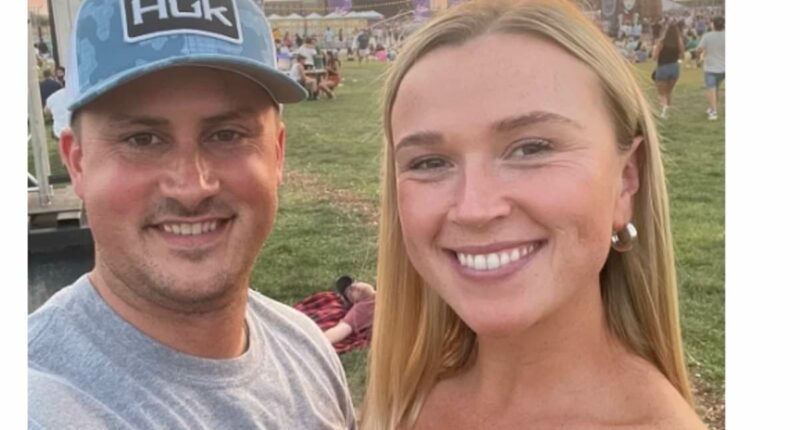Share this @internewscast.com
According to a new study, almost 10% of teenagers and young adults who are diagnosed with cancer eventually experience its most severe form.
Conducted by researchers at the University of California, Davis, this groundbreaking study examined data from 48,400 cancer patients aged between 15 and 39 who initially had non-metastatic cancer.
Over a period of nearly seven years, the study revealed that 9.5% of these individuals later developed metastatic cancer, indicating that the disease had spread to other areas of the body.
Among the seven types of cancer observed, those with sarcoma—a rare cancer affecting connective tissues—and colon cancer had the highest likelihood of recurrence and metastasis.
Researchers believe these cancers are more prone to returning due to the challenges they present in treatment, increasing the risk of recurrence in patients who were once in remission.
Dr. Ann Brunson, the study’s lead author and analyst at UC Davis, noted, “As treatments enhance survival rates, young cancer patients encounter unique challenges.”
‘Our research depends understanding of survivorship and the impact of metastatic recurrence, using statewide data to reveal trends and guide future studies.’
Cancer in all forms is uncommon in young adults, and is diagnosed in about 80,000 Americans ages 20 to 39 years, making up four percent of all cancer diagnoses. About 9,000 young patients die from the disease every year.

Carly Barrett, from Kentucky, was diagnosed with colon cancer at age 24 after she found blood in her stool and suffered from abdominal pain. She is now in remission
But officials say it is increasing quickly, with a study published in May finding that 14 cancers, including colon and breast, were rising among under-50s.
About 2,600 people under 50 are now diagnosed with colon cancer in the US every year, and rates are rising sharply. Cases have been increasing by about two percent annually since the early 2000s, and experts warn cases could double between 2010 and 2030 if current trends continue.
Breast cancer is also becoming more common in younger women. One major study found rates of newly diagnosed metastatic breast cancer in women aged 20 to 39 rose nearly three percent per year from 2004 to 2021, more than double the increase seen in women in their 70s, whose rates rose just 1.4 percent.
Doctors are stumped as to the cause of rising cancer rates among young adults, but have blamed everything from rising rates of obesity and a sedentary lifestyle to a disrupted microbiome and toxins in the environment. But those reasons fail to explain why healthy, fit people are also being struck by the disease.
Many studies generally do not track cancer recurrence, particularly in younger age groups. The researchers from UC Davis said their study was the first to track how often cancer returns among younger adults and would provide information to improve the care and treatment for under-40s whose disease does return.
For the paper, published in the journal JAMA Oncology, researchers extracted data from the California Cancer Registry, which tracks cancer patients in the state.
They analyzed data on patients diagnosed between 2006 and 2018. They were diagnosed with one of seven cancers: Melanoma, sarcoma, breast, cervical, colon, testicular and thyroid cancer. Experts suggest that all these cancers are rising in young adults.
Participants were 33 years old on average and 67 percent were female. By age group, 60 percent of cancer patients were age 30 to 39 years old, while 28 percent were ages 20 to 29 years old and four percent were ages 15 to 19 years old.
Of the patients who saw their cancer return, 376, or 0.8 percent, died.

Karina Ureña, 30, was diagnosed with stage 4 colon cancer after throwing up five times during her first-ever half-marathon. She is pictured above

Sarah Citron, 33, was diagnosed with breast cancer earlier this year after noticing a lump in her armpit. Doctors originally blamed the lump on hormonal changes from having her IUD removed to try for another child
Overall, thyroid cancer was the most common, behind 28.5 percent of cases, followed by breast cancer, 25 percent, testicular cancer, 14.5 percent and melanoma, 13 percent.
At the other end of the scale, sarcoma was the least common, behind 4.5 percent of cases, followed by colon cancer, seven percent, and cervical cancer, seven percent.
Among the patients who saw their cancer return and spread, 24.5 percent were diagnosed with sarcoma.
Another 22 percent were diagnosed with colon cancer, while 16 percent were diagnosed with cervical cancer and 15 percent were diagnosed with breast cancer.
Researchers found that those whose cancer was diagnosed at a later stage were more likely to see their cancer return. Among those with a stage three cancer diagnosis, for each cancer, more than 30 percent saw their disease recur.
For survival rates, researchers found that patients who saw their cancer return and spread had a threefold higher risk of not surviving the condition.
For those with cervical, melanoma, sarcoma and colon cancer, the patients had a 1.5- to two-fold higher risk of death if their cancer returned and spread.

Evan White, from Dallas and the eldest of three children, was diagnosed with stage three colon cancer at the age of 24 after going into the hospital to get an abscess removed from his tonsils. He is pictured above at Christmas with his Bernese Mountain Dog named Lola
In patients where testicular or thyroid cancer returned and spread, individuals did not have a higher risk of death.
When the disease is diagnosed later, the risk of recurrence rises sharply because tumors are typically more advanced and harder to fully eliminate with treatment.
Among young patients who have seen their cancer return was Evan White, who died four years after he was diagnosed with stage four colon cancer in July 2017.
The Texas local, then aged 24, was diagnosed with the cancer after attending the hospital to have an abscess removed from his tonsils.
He had surgery to remove the tumor and received 12 rounds of chemotherapy and was told he was cancer-free in June 2018. By February the following year, however, scans showed that the cancer had returned.
He received further treatment, but in early 2021 scans showed three tumors had emerged and were growing in his lungs. He died in October, 2021.
On the new study, Dr Theresa Keegan, an oncologist at the University of North Carolina and the study’s senior author, added: ‘These findings highlight the significant burden of metastatic recurrence among adolescents and young adults and the need for tailored survivorship care.
‘Understanding these patterns helps us identify inequities and evaluate how well our efforts are working to prevent, detect and treat both early and metastatic disease.’















